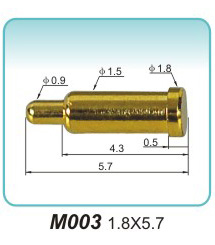The pogo pin is a precision connector used in mobile phones and other
electronic products. It is widely used in the connection between mobile phone
antennas, mobile phone batteries, etc. and the mobile phone motherboard. There
is a precision spring structure inside the pogo pin.
The components of Pogo pin roughly have 3 parts: needle shaft, spring,
needle tube
1) Needle shaft: The material is generally Becu or SK. Both have advantages
and disadvantages. Becu has good conductivity, but lacks hardness. SK has high
hardness, but it is easy to rust.

2) Spring: It is also more important. SUS SWP, especially now that more and
more PB free products, directly cause the pins or BGA solder balls to soften or
harden. During the test, it was found that the original yield rate was very
high. High, after changing the solder ball or pin material, the yield is very
poor. The choice of spring pressure is very important. The test environment has
strict requirements on the spring material. High and low temperature testing
directly affects the working life of the probe.
3) Needle tube: There are more materials to choose, generally PB material
is used.
The main reason for the low yield is due to the increase of the probe
impedance during the test.
The increase in impedance is mostly caused by the arc wear of the needle
shaft, the destruction of the plating layer, and the tin hanging on the needle
shaft during the test.
How to solve the problem of tin hanging on the pin shaft and the problem of
soft coating. The alloy coating can effectively solve this problem, increase the
hardness of the needle shaft and the surface of the alloy material is basically
not sticky to welding. The special Nanotek brush cleaning brush can effectively
solve the problem of tin hanging.
Read recommendations:
M1837 2.0x20.7(1A)
Probe connector M660 1.83X7
M3041 3.0x13.0(1A)pogopin connector Production
Where to choose a powerful pogo pin connector manufacturer?
How are RF coaxial connectors classified?pogopin factory